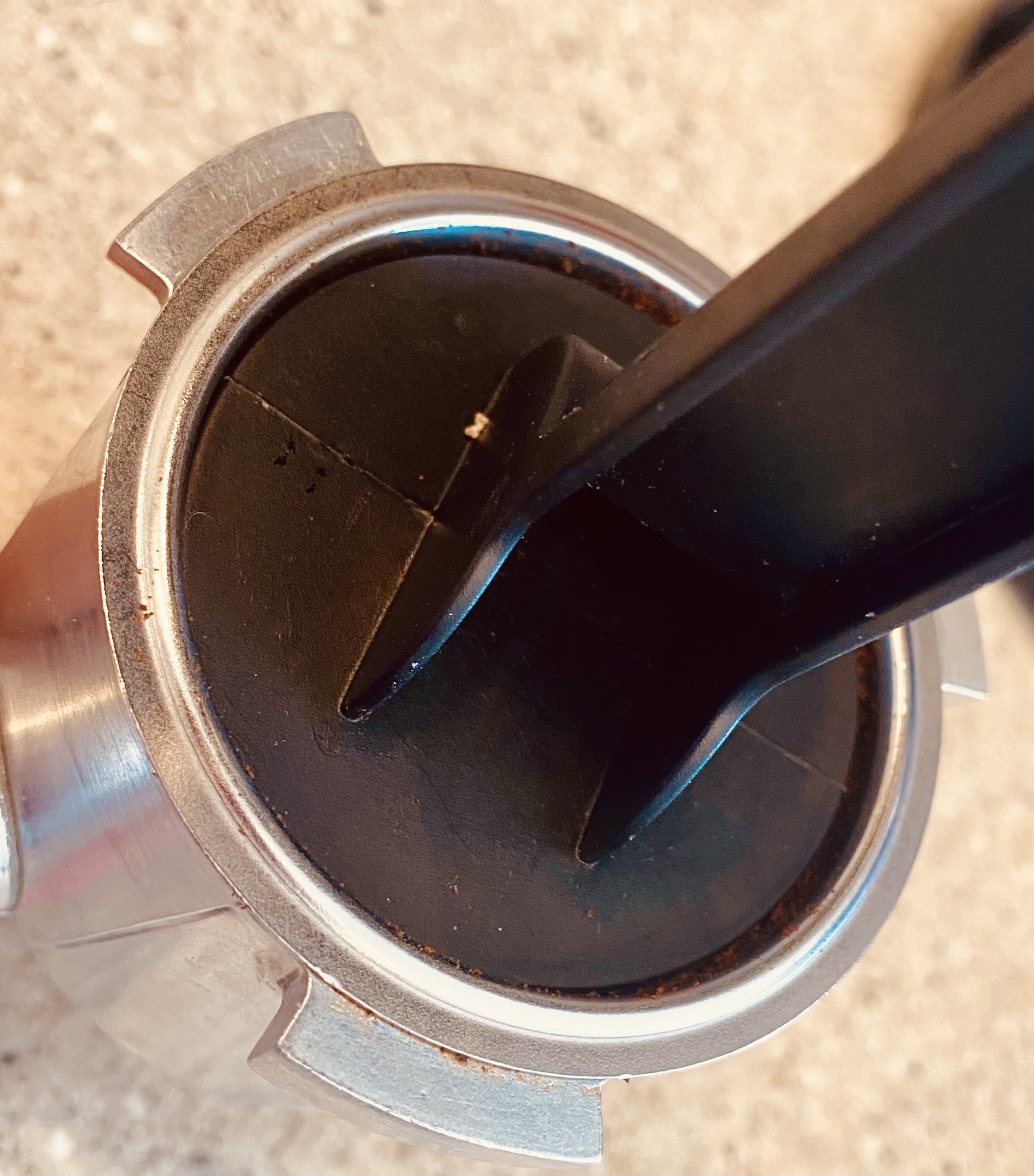An espresso machine that won’t brew at 4 am when it’s needed most is a code red crisis that puts the rest of the day on hold. Thankfully De’Longhi has foreseen this and offers a range of machines that lead the market for reliability and ease of troubleshooting to keep the world on track.
Espresso machines have always been notoriously fickle and trouble-prone. In the past, they required the skills of a mechanic to troubleshoot the hydraulics, heat, and electricity. De’Longhi recognized this and has perfected easy-to-troubleshoot machines like the Dedica 685 to get the black gold flowing again.
You can address most problems in two ways; setting up properly and getting your puck right for the pressurizing filter.
Trouble Setting Up
A De’Longhi coffee machine is easy to get going, too easy possibly, leading to user complacency. We’ve all been there, groggy and half-blind in the morning, stumbling through the motions, bewildered by a machine that won’t start. Check the plug and retry the switch. This is the one time you can be forgiven for the mistake, which hopefully no one saw.
Watch the buttons cycle through their start-up sequence because this is when the descaling notification appears. A flashing orange steam button will let you know your machine needs this simple process, which isn’t difficult but does take time.

The all-important run through
You can avoid a lot of the troubleshooting process with an attentive run-through, something you should do with all machines but more so when pressurized filters are involved. Assemble the empty filter and lock it into place. Then run a shot of hot water to flush as much water as possible. This warms up the pump and your cup and, more importantly, flushes old grinds from the hub.
Remove the filter from the hub. You should feel a slight pressure release and see a tiny amount of water left behind. This is a sign that things are pressurizing right.
Too much pressure upon release means something’s partially clogged, probably the mesh. Rinse and dry it with a paper towel, not a cloth that can harbor grinds.
No pressure but lots of water left in the filter means the gasket has been compromised, possibly a ding or a scratch.
Never wander off as the brewer is running. If it clogs, the sooner you can abort, the less pressure will have built up, and the less explosive it will be when you remove the filter (see below).
Pressure Troubles
Welcome to the pressurizing filter. It’s excellent for making average or lazy shots better, but it’s also a world of complexity that can have trouble all its own for the uninitiated.
Unlike a manual machine, semiautomatics don’t let you directly play with the pressure. A true coffee aficionado will tell you that the downside is you lose the whole art of espresso. But the upside is it confines almost all problems to the filter, which is the easiest place to fix problems.
Over-Pressurizing
One problem with pressurized filters is it only takes a single grind of coffee to block the outlet. So scrutinize the filter chassis and mesh screen, including around the seal. A good way to check before starting is to hold it up to the light. You can instantly see if it is clear.
If your machine over-pressurizes, you will know immediately, as you will hear it make a lot of noise and no liquid comes through. Press the extraction button to stop further pumping, and remove any glasses from the tray.
BE VERY CAREFUL removing the filter from an over-pressurized machine as the release will be violent with hot water involved. The handle will be hard to twist, so add some leverage by holding the coffee maker and turning it evenly. Be prepared for the filter to release suddenly with a loud burst as the pressure escapes.
The filter will be filled with hot water. Dump it out, remove the basket, and pop the screen out. Hold the screen up to the light. You will probably find the outlet blocked. A toothpick or other sharp object should clear it, but blow through the outlet just to be sure.

One cause can just be rogue coffee grounds, often picked up from a cloth. But excess pressure can also result from the mesh not seating properly or a damaged seal, which lets grinds get into the bottom of the filter.
Under-Pressurizing
Under-pressurizing is usually caused by gunk compromising the head seals, so make sure the three-pronged locking collar on the filter is scrupulously clean. The collar needs a good seal against the basket’s rim, so cleaning with a nylon brush around the lugs keeps everything tight.
Check the collar for dings, burrs, or scratches from cleaning. Despite what you may see star baristas doing, don’t get too cavalier with your technique, as even slight dings will ruin filter pressurization. Burrs can be dealt with using sandpaper, but if you find severe scratches, you’re looking at a new filter.
Older machines with a lot of use will gradually wear down the collar lugs, allowing too much tolerance that lets pressure bleed out. Make sure the lugs are still pristine and not chipped or dented from use. The only fix here is getting a new one.
Persistent Problems
If pressure trouble persists, or even gets worse, there’s a chance you are looking at gasket issues. This requires some open surgery and will postpone your shot, but it could save you a trip to customer service (see below).
Undo the screw in the face of the pressure head. It will come away easily, exposing the pump face with the circular gasket visible around the collar locks. Check this for deformities and buildup of old grinds by gently popping it out with something blunt, like a demitasse spoon.
Wash it and wipe out its recess, then reassemble it carefully. If you’re lucky, it’s just a glitch, but replacements are not hard to find if the gasket is damaged or hardened. Buy two to avoid this happening again.
Extraction Troubles
Before going deeper, remember that your De’Longhi coffee maker has programmed water haptics that control pull times, water temperature, and water hardness. If you’ve changed your coffee beans and are struggling, reference the coffee maker user manual to ensure you have the best programming for your hot coffee.
Pressurizing filters offer a safety net for amateur operations. But, they mask the diagnosis of what would be evident with a regular filter and are misunderstood by many, resulting in erratic reviews that make some people skeptical of them.
Even the most hopeless coffee puck will still get some pressure in a pressurizing filter, with the filter floor making up for it and disguising the problem. Where the water would gush through or spurt using a normal basket filter, with a pressurizing filter, everything can appear fine until it’s too late.
Pressurizing filters rely on an equilibrium of pressure shared by the puck and the filter itself via the little hole in the filter floor. This means the puck works differently than a regular coffee filter, which creates almost all of the extraction pressure.
Pressurizing filters have a guaranteed baseline of pressure from the filter itself, meaning you need to match it with your grind. The ideal pressure ratio seems to be about three-fifths from the puck, allowing optimal extraction without too much pressure from the filter. Too much either way and the differential shifts, resulting in issues you won’t know about till you drink it.
Too thin, sour, and acidic
Under-extraction happens when too much pressure comes from the filter because the grind is either too coarse, too little, too loose or the mesh is unseated. Pressure bypasses the puck and is mostly generated by the filter floor.
The pull will sound too easy, like there’s too little resistance, and pre-infusion will run through too easily. This is the sign your grind isn’t adding enough pressure to that generated by the filter.

Make the grind medium fine, and ensure that you tamp the filter basket right to the top, with only a millimeter below the rim to allow it to lock in.
If you still can’t get the sourness out, run a single pre-infusion, aborting the pull to discard it ristretto-style. Then let it run through as normal, with the puck fully expanded, thereby raising its pressure ratio to the filter floor.
Too bitter and flat
Over-extraction happens when the puck is too dense. The combined pressure of the puck and the filter floor, plus the programmed time of the pull, draw too much from the grind. The pull will sound uneven, struggling as it continues, and pre-infusion will probably produce nothing.
Remember, the filter contributes a lot of pressure, so a grind that’s too fine will push it too far. Ease back an increment, drop back a gram or so, bump it in well, and ease off the tamp pressure to about half. In this case, over-tamping would just be normal tamping for a regular filter,
Water Troubles
If you’re not pulling water, it may be the water reservoir has leaked dry, something initially hard to judge as the inlets sit above the bottom of the water tank, making it look like there’s about a shot left. This is easy to do, especially when using the milk frother, and once the clean water supply runs dry, it takes a run-through to refill.
If the inlet seals suck air, check that they are moist and not broken. Always remove the reservoir to refill it, don’t refill it while it is attached, as the seals may have dried out since you last used the espresso coffee maker, potentially jamming the valves open.
De’Longhi has included an alert for when things need descaling. The steam button on the coffee maker flashes orange when turned on. Heed this. The decalcification procedure is simple, fully automated, and no more than a flush-through with a commercial descaling solution. But it will take about 20 minutes, an eternity if you have guests or an early start.
Crisis Averted
Almost all potential troubles with De’Longhi Espresso Machines are easily resolved when they happen. Mechanical problems are almost always simple; a blocked filter or a seal that needs reseating. Like all espresso machines, extraction problems usually come down to the ground coffee itself. In De’Longhi’s case, it might require some adjusting for the pressurizing filter.
Overall, De’Longhi has excelled in making machines easy to keep running for years without missing your shot.
FAQ
Can I replace the filter mesh seal?
No, they are factory-integrated into the mesh. You’ll need to buy a whole new filter.
Does blasting the frother release an over-pressurized filter?
No, because the pressure in the filter is the other side of a one-way pump, but it will release pressure backed up in the machine, which won’t hurt.
What if the hub gushes water?
This is a sure sign the hub gasket is gone. Remove as detailed above and replace.
What if I still can’t fix the problem?
As with all machines, sometimes you can’t fix the problem yourself, and with home coffee machines, you often can’t get to the mechanism. De’Longhi machines have a good reputation for reliability, which is good as their customer service has suffered over the last few years.
Happy Caffeinating!







